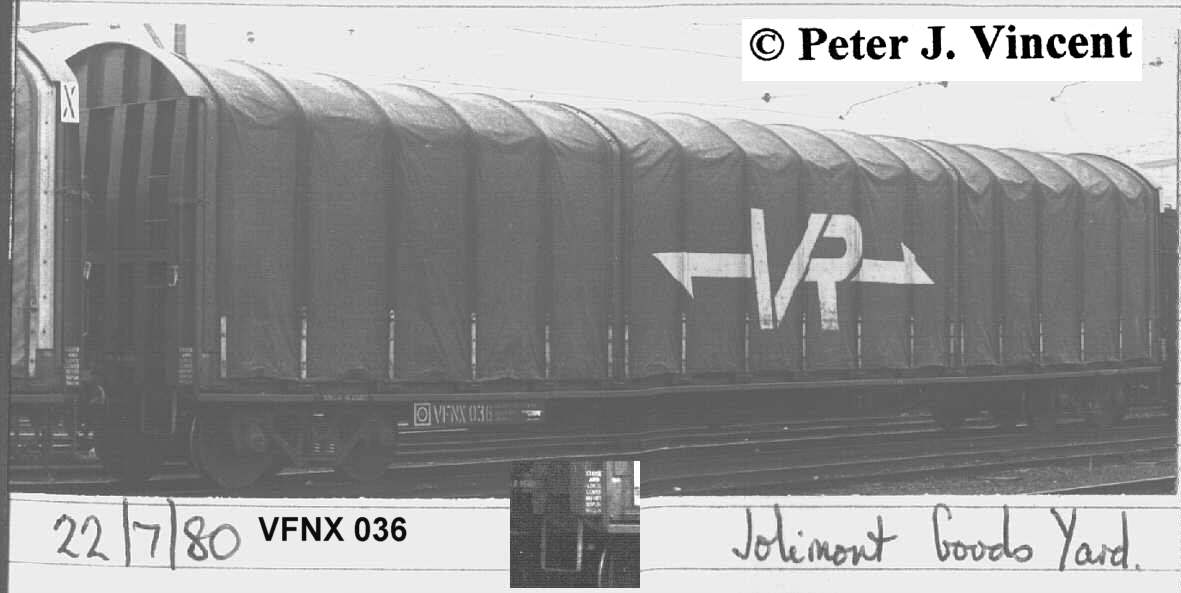

There were fifty VFNX wagons constructed for rollpaper traffic. The rollpaper was manufactured at Maryvale in the Latrobe Valley and transported to Melbourne, Montague Shipping Sheds. Two tiers of rollpaper were loaded along the wagon. The vehicle design allowed easy load/unload and weatherproofing by moveable hoops supporting a convas cover. These wagons replaced tarpaulin covered bogie open wagons already in this traffic.
The design appears to be home grown, with some influence from similar vehicles running through Europe. The VFNX canvas support and locking system suffered a lot of problems which continued to plague the class into the 1990's. Main problem was the hoops supporting the canvas binding when opening or closing the canvas covering.
All VFNX's were built the same. As built the vehicles were issued to service with 'zero filled' numbers; ie 001, instead of 1. The impression gained was that computerised numbers were starting. The vehicles were even type written up in the 'Registers' zero filled. Later research seemed to indicate that the numbers had been painted incorrectly, based on the lettering diagram showing the three lettering positions.
In the early 1990's, a few wagons has the tarpaulin gear removed and ran in service as flat wagons with end bulkheads. These were numbered into the 100 series.
To solve the problems of the tarpaulin gear, several wagons were fitted with special slides and hoops, with electronic welded "plastic" tarps which were a blue colour. These wagons were recoded to VFPX with new numbers.
In 1995, two VFNX wagons were rebuilt to timber transports, again similar to European wagons. The conversions were done at Bendigo. The new vehicles were coded VFHX and used side stanchions from ANR wagons ex Tasmania.